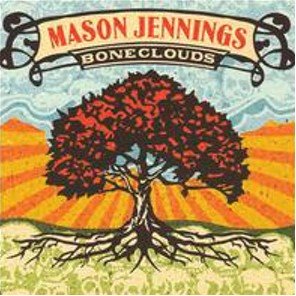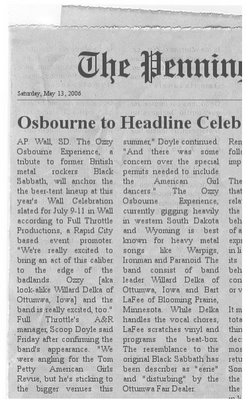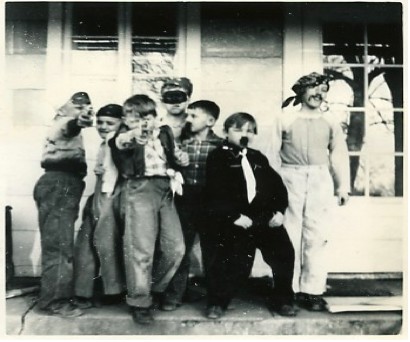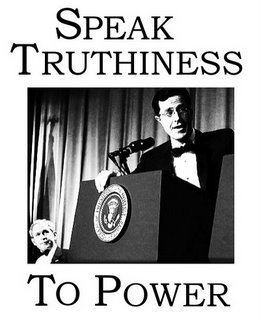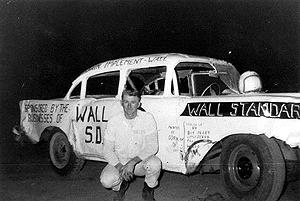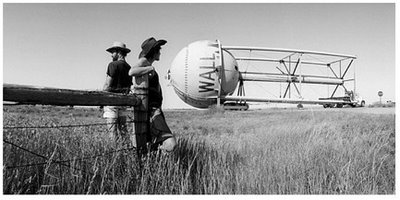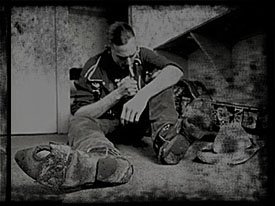There is no consensus among Native Americans or outside observers regarding the definition of power, but the general view seems to be that power comes initially from a supernatural source or sources, and that it is best described as an astounding and electric like energy that pervades the universe. Power is present everywhere, in ever varying degrees in everything. This power exists in everything so that it can justifiably be said that each of us is, in a sense, part of this power. Fools Crow expressed the idea that it was his belief in this power, which he recognized as an entity, that made his communication more effective. In order to prepare for receiving and using the power, he performed a simple, yet powerful, prayer/ceremony.
With his eyes closed, he began to pull with both hands at his chest and abdomen as if he were pulling out evil, negative things or stumbling blocks. He grabbed many handfuls, and threw away what he had gathered.
He clutched at the air above him, where he seized unseen things in his head and body.
Finally, he started to pull invisible things out of his chest and body, holding both hands side by side in front of him and threw what he was clutching out into an invisible audience.
As he sang a "sound song" to the Higher Powers, he became like a clean new hollow bone.
I cured with the power that came through me. Of course, it was not I who cured, it was the power from the Outer World, the visions and the ceremonies had only made me like a hole through which the power could come to the two leggeds. If I thought that I was doing it myself, the hole would close up and no power could come through. Then everything I could do would be foolish.
Postscript: Hootenanny dug up this letter from decorated war veteran, Presidential contender and US Senator from Arizona, Mr. John McCain:
From: Senator John McCain - Chairman Senate Committee on Indian Affairs
Concerning: Rescindment of Medals of (dis)Honor
Date: June 24, 1996
Dear Mr. Dill,
Thank you for your recent letters, together with signatures and comments from other citizens via the Internet, proposing that Congress rescind seventeen Medals of Honor awarded to U.S. Army personnel for actions at Wounded Knee, South Dakota, on December 29, 1890, and at Drexel Mission on the following day.
I appreciate why you view with dismay the award of the nation's highest decoration for valor to soldiers of the United States Army for their individual efforts in an action that resulted in the death or wounding of as many as 370 Indian men, women and children. I also appreciate the concern that these awards can be viewed as diminishing the value of Medals of Honor awarded for conduct in other conflicts.
The policies and decisions of the United States Government that led to the Army's being at Wounded Knee in 1890 doubtless can be characterized as unjust, unwise, or worse. Nevertheless, a retrospective judgement that the Government's policies and actions were dishonorable does not warrant rescinding the medals awarded to individual soldiers for bravery in a brief, fierce fight in which 25 soldiers were killed and 45 others wounded. Neither today's standards for awarding the medal nor policies of the United States with regard to Indian tribes are what they were in 1890.
The criteria by which the Medal of Honor is awarded have changed greatly since the original, ambiguous, nineteenth century authorization for the medal that gave commanders a wide latitude in choosing men to receive it. Soldiers could even nominate themselves for the award, and did. Between 1891 and 1897, over 500 medals were awarded for actions in the Civil War, more than three decades earlier. These awards led to the formation of the Medal of Honor Legion, and organization of recipients concerned that wholesale bestowal of the award was weakening the medal's prestige.
In part due to the efforts of the Medal of Honor Legion, President Wilson in 1916 signed a law that clarified the procedures and standards of proof for awarding the Medal of Honor. To receive the medal, one must demonstrate distinguished gallantry or intrepity, at the risk of life, above and beyond the call of duty. The 1916 law also provided for a board of retired generals to review each of the 2,625 Army medals awarded for conduct during campaigns against Indian tribes between 1861 and 198, including Wounded Knee. As a result of this review, 911 medals were rescinded, all because the recipients were judged not to have distinguished themselves in combat and at the risk of their lives.
In 1990, in an unprecedented action the 101st Congress passed Senate COncurrent Resolution 153, which apologized to the Sioux people for the Wounded Knee massacre and expressed support for the establishment of a "suitable and appropriate memorial to those who were tragically slain at Wounded Knee." Since then, descendents of the Wounded Knee victims and survivors, the Oglala Sioux and Cheyenne River Sioux tribal governments, the State of South Dakota, Members of Congress and the U.S. Department of the Interior have considered a number of proposals, including a National Tribal Park, as an appropriate memorial.
While a consensus on a Wounded Knee memorial proposal remains elusive, efforts to achieve such a consensus are continuing. I support these efforts in the belief that establishing a well-conceived memorial to the victims of Wounded Knee is much preferable to attempting to strip long-dead soldiers of a medal which they might not merit under today's standards.
Sincerely,
John McCain - Chairman
Hootenanny's opines:
Senator McCain,
We sincerely respect and honor your sacrifice as an American soldier, but we believe medals should not have been issued in this instance and were not merited or justified under any standard.
We believe an injustice should be rectified. We believe it's a principle on which this society was founded. We believe there is injustice in failing to reclaim honor that wasn't earned.
You suggest the passage of time and changing standards make it impractical to retrieve these medals and honors but we think the passage of time only compounds a callous and sickening error.
Senator McCain, we can't and won't encourage our readers to vote for a candidate or political party that elevates form over substance. Please sponsor new legislation to revoke the (dis)honors distributed to 7th Cavalry Soldiers for their action at Wounded Knee in the Lakota Nation in December 1890.
Senator, for your convenience we've appended the recipients names. etc. Please take a look.
(1) Austin, William G., Sergeant, Company E, 7th calvalry, issued June 27, 1891: "While the Indians were concealed in a ravine, assisted men on the skirmish line, directing their fire, etc., and using every effort to dislodge the enemy." Entered service at New York, N.Y. Born, Galveston, Tex.
(2) Clancy, John E., Musician, Company E, First U.S. calvalry, issued January 23, 1892: His citation stated that he had rescued wounded soldiers, twice. Clancy was courtmartialed eight times during his career, twice between the fight at Wounded Knee and the receipt of his medal.New York, N.Y.
(3) Feaster, Mosheim, Private, Company E, 7th calvalry, issued June 23, 1891 for "Extraordinary gallantry." Entered service at Schellburg, Pa. Born, Schellburg, Pa.
"...the officer who who recommended him was more than a quarter of a mile away at the time of Feasters's heroic action. However, three affidavits were given atteting to his acts. The three men who signed these statements were friends of Feaster and fellow members of Troop E. These witnesses also received Medals of Honor."
(4) Garlington, Ernest A., 1st Lieutenant, 7th calvalry, issued September 26, 1893 for "Distinguished gallantry." Entered service at Athens, Ga. Born, 20 February 1853, Newberry, S.C.
(5) Gresham, John C., 1st Lieutenant, 7th calvalry, issued March 26, 1895 because he "Voluntarily led a party into a ravine to dislodge Sioux indians concealed therein. He was wounded during the action." Entered service at Lancaster Courthouse, Va. Born, Virginia.
"A unsigned, undated letter in Gresham's file states that no records could be found of Gresham's wounds, and curiously, the regimental returns for January 1891 show him "on duty." There is, however, mention elsewhere that during the fighting Gresham 'received an abrasion on the nose from a passing bullet.' Later in his career Gresham was implicated in a case where funds belonging to a student in his charge were missing. There is no record of the outcome, but he was ordered to retire with in six months after these allegations were made. A medical report tells of his 'outbreaks of fury over trivial matters...[and]...mental depression objectively shown by a permanent expresion of dissatisfaction.'"
(6) Hamilton, Mathew H., Private, Company G, 7th calvalry, issued May 5, 1891 for "Bravery in action." Ireland.
...[medal granted for] "conspicuous bravery in rounding up and bringing to the skirmish line a stampeded pack mule...Company G was not in a direct line of fire. Common sense would suggest animals frightened by gunfire would run away from the shooting. It almost seems Hamilton was awarded the Medal of Honor for riding away from the fighting."
(7) Hartzog, Joshua B., Private, Company E, 1st Artillery, issued March 24, 1891 because he "Went to the rescue of the commanding officer who had fallen severely wounded, picked him up, and carried him out of range of the hostile guns." Paulding County, Ohio
"All of the indians opened fire on us. One of my men went for ammunition and didn't come back. ...My captain called to me to come back, but I kept moving nearer the indians, and kept shooting. Lieutenant Hawthorne came toward me and was calling, when suddenly I heard him say: 'Oh, my God!' Looking around, I saw him lying of his side, and then I knew he had been hit. Hartzog ran to him and carried him back behind the hill. .."]
(8) Hawthorne, Harry L., 2nd Lieutenant, 2nd US Artillery, issued 10.11.1892,
"Distinguished conduct in battle with hostile indians." Entered service in Kentucky. Born, 1860, Minnesota.
[Hawthorne was responsible for two "Hotchkiss Breech-loading Steel Mountain Rifles, caliber 1.65 inches; length of bore, 24.72 calibers; weight of tube, 116.6 pounds; weight of carriage, 220 pounds; weight of exploding cartridge, 2 pounds 10 ounces; effective range, 4,200 yards."] [Hawthorne's] "wound was so severe that he was forced to spend several years away from field duty. One of his assignments was as professor of military science at the Massachusetts Institute of Technology. He eventually gave up that post because of teasing he received from the students. This harassment was directed toward the army in general and at Hawthorne in particular...[because] The students believed there had been a massacre at Wounded Knee and blamed Hawthorne and the Army."
["...The bursting artillery rounds churned up the earth and caved in banks. ...a Hotchkiss shell punch[ed] a six-inch hole in the middle of a man's stomach. Up and down the ravine the People sang death songs..."An occasional shot came from the teepees. To stop this, the battery raked the Miniconjou camp from one end to the other. Flying shrapnel shredded the lodges and sought out every living thing.]
(9) Hillock, Marvin C., Private, Company B, 7th calvalry , issued April 16, 1891 for
"Distinguished bravery." Entered service at Lead City, S. Dak. Born, Michigan.
(10) Hobday, George, Cook, 7th calvalry, Company K, issued for "Conspicuous and gallant conduct in battle and [because he] was noticed by several officers. Information from draft copies of his recommendation indicated his primary act of bravey was 'voluntarily leaving his work as a cook.'"
Pulaski County, IL.
(11) Jetter, Bernhard, Sergeant, 7th calvalry, Company A, issued April 4, 1891 for
"Distinguished bravery."
(12) Loyd, George, Sergeant, Company I, 7th calvalry , issued April 16, 1891 for [Loyd] "was a veteran of the Little Big Horn campaign [and] on his sixth enlistment. Two years, almost to the day [of receipt of his medal], he committed suicide. The only mention in the regimental record is that he died by 'shooting himself through the head.'"
"Bravery, especially after having been severely wounded through the lung."
(13) McMillan, Albert W., Sergeant, Company E., 7th calvalry, issued June
23, 1891 because:
"While engaged with Indians concealed in a ravine, he assisted the men on the skirmish line, directed their fire, encouraged them by example, and used every effort to dislodge the enemy." Entered service at Baltimore, Md. Born, Baltimore, Md.
"He was promoted to sergeant major prior to April 6, 1891. For reasons not found in his records, he was demoted to private before his discharge on September 21, 1892."
(14) Neder, Adam, Corporal, Company A, 7th calvalry, issued for "gallantry in action...One of the citations says Neder was wounded; then that entry is struck through."
(15) Sullivan, Thomas, Private, Company E., 7th calvalry, issued June 23, 1891 for "exposing [himself] to the enemy" Entered service at Newark, N.J. Born, Ireland.
(16) Toy, Frederich E., First Sergeant, Company G, 7th calvalry, issued May 26, 1891 for "bravery."
(17) Trautman, Jacob, First Sergeant, Company I, 7th calvalry, issued March 27,1891 because he "Killed a hostile indian at close quarters, and, although entitled to retirement from service, remained to the close of the campaign."
(18) Ward, James, Sergeant, Company B, 7th calvalry, December 29, 1890, award issued April 16, 1891, because he "continued to fight after being severely wounded." Entered service at Boston, Mass. Born, Quincy, Mass.
"Ward was reported as having been severely wounded, though no other records, medical or otherwise, could be found to support this.
(19) Weinert, Paul H., Corporal, Battery E, First U.S. Artillery , award issued for advancing with Hotchkiss gun into ravine in pursuit of women and children... Weinert later commented: "With his gun less than 300 yards away Weinert's firing inflicted terrible damage, undoubtedly killing and wounding many women and children...Later in the decade Weinert adorned with his Medal of Honor, toured with Buffalo Bill Cody's Wild West show as a member of it's color guard. "I expected a court martial, but what was my surprise when gruff old Allyn Capron, my captain, came up to me and grasped me by the shoulders and said to the officers and men: 'That's the kind of men I have in my battery.'"
Entered service at Baltimore, Md. Born, Germany.
Taking the place of his commanding officer, who had fallen severely wounded, hr galantly served his piece, after fire advancing it [the Hotchkiss gun] to a better position.
(20) Ziegner, Hermann, Private, Company E, 7th calvalry, Wounded Knee, 1890, issued 6.23.91 for "conspicuous bravery."
Thanks for your prompt attention!
The Hoots






